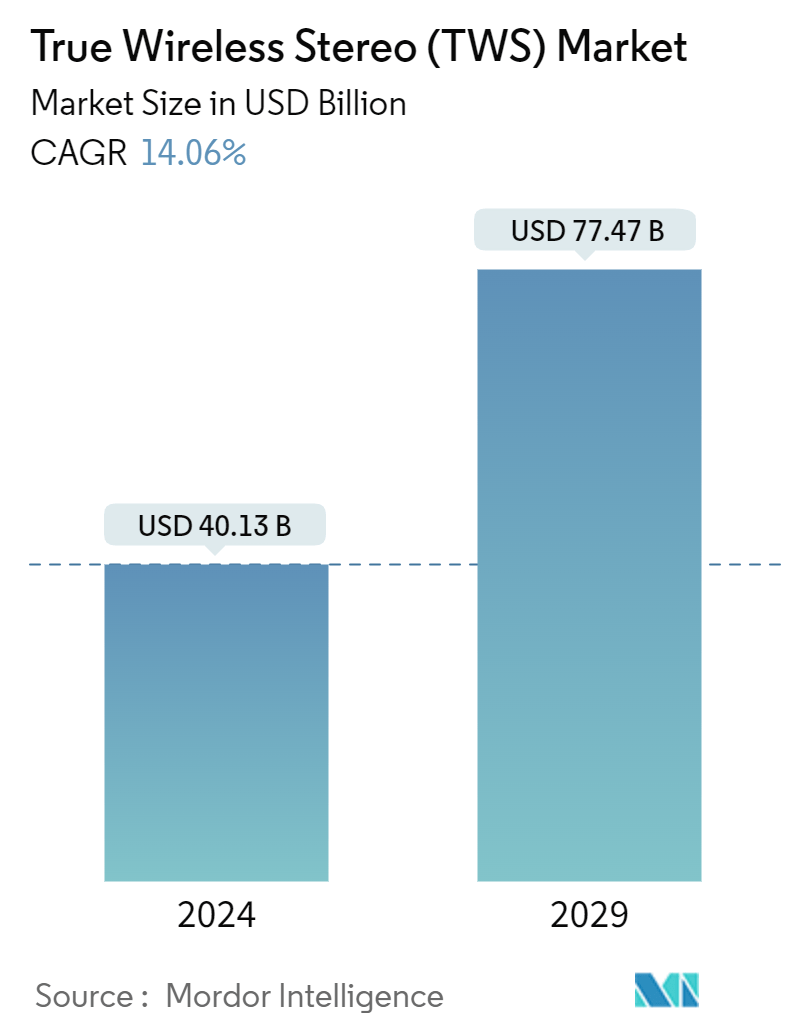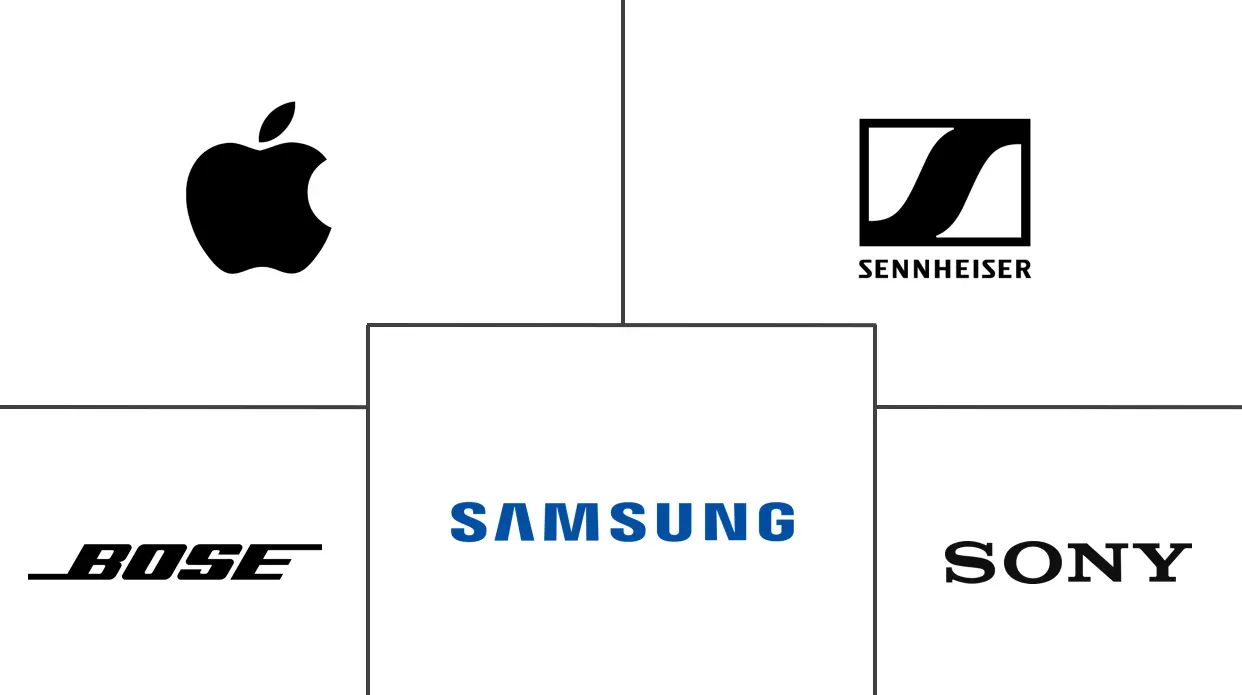Market Size of True Wireless Stereo (TWS) Industry

| Study Period | 2019 - 2029 |
| Market Size (2024) | USD 40.13 Billion |
| Market Size (2029) | USD 77.47 Billion |
| CAGR (2024 - 2029) | 14.06 % |
| Fastest Growing Market | Asia Pacific |
| Largest Market | North America |
| Market Concentration | Low |
Major Players
*Disclaimer: Major Players sorted in no particular order |
True Wireless Stereo (TWS) Market Analysis
The True Wireless Stereo Market size is estimated at USD 40.13 billion in 2024, and is expected to reach USD 77.47 billion by 2029, growing at a CAGR of 14.06% during the forecast period (2024-2029).
- The market has experienced exponential growth since Apple's AirPods debuted in 2016, establishing the trend for truly wireless audio. The trend has been further fueled by the removal of headphone jacks in numerous smartphones and a growing consumer preference for hands-free and wire-free experiences.
- Advanced features like Active Noise Cancellation (ANC), high-quality audio codecs, and voice assistants were once exclusive to premium TWS models. Today, these features have become standard, even in mid-range and budget offerings. This democratization of technology enables a wider consumer base to access premium features at more affordable prices, spurring broader market adoption.
- With the expansion of smart devices and the IoT ecosystem, TWS earbuds are increasingly being integrated with smart home devices, wearables, and virtual assistants such as Amazon Alexa, Google Assistant, and Apple Siri. This integration facilitates seamless interactions between devices, granting users hands-free control over their smart environments.
- Battery life continues to be a pivotal factor in consumer decisions. In response, manufacturers are enhancing battery efficiency and adopting fast-charging technologies. Many models now provide several hours of playback with just a few minutes of charging. In a notable announcement, Google revealed the upcoming launch of its Pixel Buds 2 in September 2024, boasting an impressive battery life of up to 8 hours with ANC activated.
- As environmental awareness rises, both consumers and manufacturers are taking notice. Brands are increasingly prioritizing sustainable materials, recyclable packaging, and eco-friendly designs. In March 2024, Skullcandy unveiled its latest innovation: the EcoBuds True Wireless Earbuds. These earbuds mark a significant milestone as Skullcandy's most sustainable offering to date. Crafted from 65% certified recycled plastics and containing 57% fewer heavy metals, these new earbuds also feature a carbon footprint that's 50% lighter than their market counterparts. Remarkably, all these eco-friendly attributes come at a fraction of the usual cost, democratizing sustainability.
- The TWS market grapples with challenges, notably fierce competition that sparks price wars and shrinks profit margins, particularly in the budget segment. While advancements are evident, concerns linger, especially with battery life. Features like active noise cancellation, while desirable, significantly drain power.
- Emerging markets are witnessing a surge in the TWS market, fueled by rising disposable incomes. With a growing middle class, consumers are increasingly purchasing tech gadgets, propelling market growth. Furthermore, the rise of e-commerce and rapid delivery apps has made TWS products more accessible. Many online platforms offer significant discounts, further boosting market demand. However, the rising inflation rates have increased the cost of goods and services, including TWS. Higher costs are leading to reduced purchasing power for consumers and businesses, slowing down the market growth.

